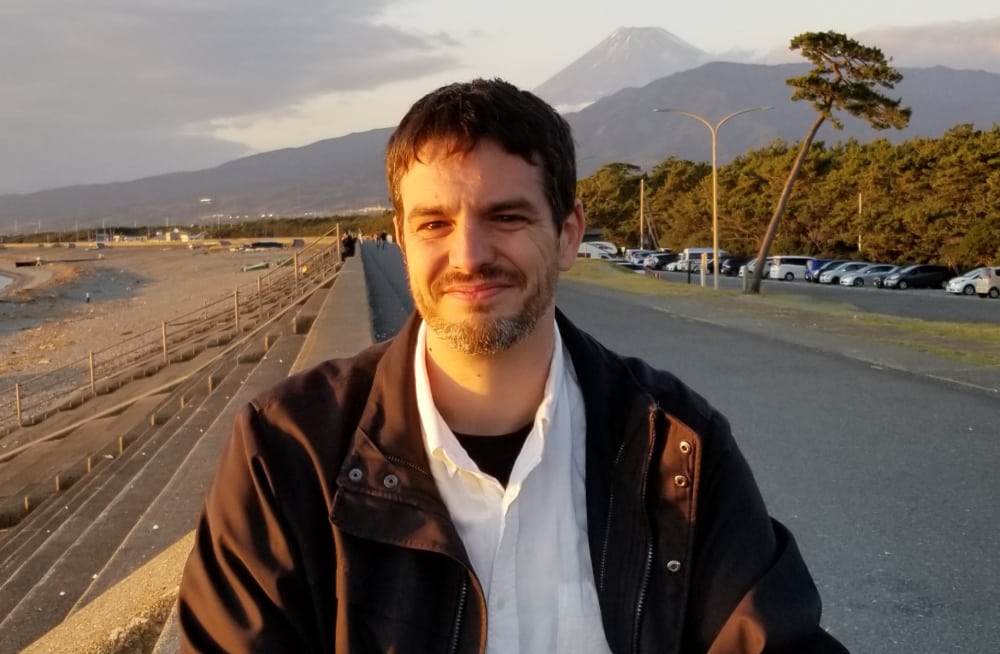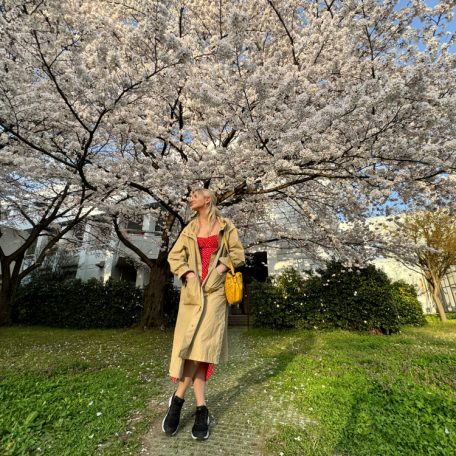Expat in Japan – Interview with Patrick Loyer, an inbound travel professional
Dec 1, 2021
BY Jessica Iragne

Today we are really excited to interview a special guest for our “Expat in Japan” series: Patrick Loyer, an inbound travel professional living in Shizuoka Prefecture.
Hi Patrick, thank you so much for your time. Can you please introduce yourself?
My name is Patrick Loyer and I grew up in and around Montreal, Canada. I am currently in my 13th year in Japan and I work for a travel operator called Discova as their Product Design Executive. Basically, my role is to constantly improve our current travel ideas as well as find new ones for travelers coming or living in Japan. From food tours to rafting and self-drive in Japan. It’s my job to try and find something that suits everyone, and find ways to reinvent even the more visited areas to help people peel another layer to the city.
Why did you come to live in Japan?
As a kid I was always curious about ninja and samurai movies. I always thought it was cool and I love the concept of respect and deep honor they had. Then, around the early 90’s, anime started to become a big thing and I found a love of anime. I realized I loved anime, but not much American comics, so I started to wonder if it was because of the culture and started to read and study about Japan and just fell in love with the culture and country when I did a working holiday.

Photo credit: Patrick Loyer
What surprised you the most when you came to Japan the first time? And why?
I think the first shock was how little I could manage at the time, even with 1 year of Japanese studies at university. Japan has made leaps in restaurant menus and signs in English since, but the first few days were a sensory and disorienting overload.
Do you have a funny anecdote – lost in translation/culture shock experience to share?
I made a huge mistake when I got my first car in Japan. After a few weeks of having it, I went to a self-service station (I was living in Hokkaido back then). My Japanese reading skills were still poor, and I stopped at what I thought was gas. I couldn’t read the kanji, but assume it was “regular” as I was seeing other people fill up their cars in similar stations just beside. After 5 minutes of leaving the gas station, my car started to make a loud sound any time I pressed the accelerator. I was still 1h away from home and was about to leave the town I was in for total countryside, so I stopped at another gas station which was just closing. I explained in my Japanese that I had issues with my car and showed the receipt from the previous gas station. The old lady who looked at it simply started to laugh, waived “no” and said “dame” “dame” while laughing. Seeing my confused face, she just continued laughing and said “touyu” and waived me away while continuing to laugh and went back inside. Ends up I had put kerosene in my car. Kerosene heaters are so common in Hokkaido that kerosene is beside the regular gas tanks in some stations. Fortunately, there was a Toyota garage nearby which was still barely open, and took my car in to repaired. I took the bus home. That’s how I learned the kanji for kerosene.

Photo credit: Patrick Loyer
You are living in Shizuoka, an area we really love at Arigato Japan! Can you please tell us more about the city you are living in now and why did you choose Shizuoka?
I live in a city called Numazu. It’s not a very touristy city, but it is quite convenient. It is located at the top of the Izu Peninsula and near Mount Fuji, within 1h, I can either be at superb beaches in the Izu Peninsula or have spectacular views of Mount Fuji on nice days. There are lots of experiences to have around here and a lot of fresh sources of water from Mount Fuji. The area also has a strong culture and many local festivals, which I love to get involved with. For nature lovers, the area is perfect. Mount Fuji, beaches, coastal area, hot springs, cycling tours, hiking, camping… And it takes me about 1 ½ hours to go to the office in Tokyo, about the same as some people living near Tokyo traveling in crowded trains while I sit and nap in the bullet train.
There are a lot of good dishes in Shizuoka but if you have to name ONLY ONE you’d recommend, what would it be?
It is a hard choice, but I would go with Fujinomiya Yakisoba. While it can be found in many festivals throughout Japan, the real dish locally tastes much better. It has firm noodles, a stronger taste and more sauce than regular yakisoba and they use a kind of meat lard to enhance flavor and which I haven’t seen elsewhere.

Photo credit: Patrick Loyer
And regarding Japanese food in general, which is your favorite?
I really love Hiroshima-style Okonomiyaki, which is made with soba noodles. If you know where to go in Fujinomiya, you can find Shigure Okonomiyaki, which is Okonomiyaki made with Fujinomiya Yakisoba, just amazing!
What do you think about food tours?
Food tours are often a great way to discover something new. A good food tour will have amazing food and also challenge you to try something new and get you out of your element a little. After all, that’s why we travel. It’s also a great opportunity to mingle with the locals usually and see the places not “made for tourists”.

Photo credit: Patrick Loyer
Anything to share with our readers?
I would say it is worth getting off the main destinations. Everyone wants to see Tokyo, Hakone, Kyoto, Osaka; but these cities are all becoming very touristy, and I feel don’t have the same charm as even 10 years ago. They are worth visiting still, but if you are coming to Japan only once, do yourself a favor and plan at least 2 days in a less visited area. Many places are developing amazing programs now for all kinds of travelers. From homestay and farm experience, sustainable trips, cycling adventures to traditional kitchen knife making, sake breweries with an expert sommelier and glamping. Something for everyone’s taste and budget!
Follow Patrick on:
Join us on a local and authentic experience in Shizuoka for your next trip to Japan!
PIN THIS FOR LATER
Book your pocket wifi now to stay connected through your entire Japan Journey!

Be sure to get the JR Pass to make navigating Japan during your trip that much easier!

YOU MIGHT ALSO LIKE





